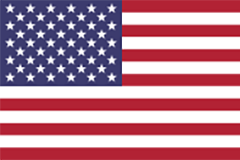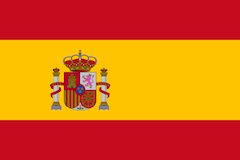The growth in this area of their collecting also coincided with John de Menil becoming a board member of the Museum of Primitive Art in New York City beginning in 1960. His position significantly enhanced the de Menils’ exposure to the arts and culture of Africa, Oceania, and the Americas. Founded by Nelson A. Rockefeller, the Museum of Primitive Art (MPA) opened in 1957 in a townhouse on 54th Street. Under the direction of Robert Goldwater (1907–1993) and with René d’Harnoncourt serving as vice president of the board, the museum’s exhibition and publication program dedicated to what was then considered “primitive art” was unique in the United States. It was incredibly influential for the de Menils’ during their most active decade of collecting.
Art of Ancient Peru, one of the MPA’s exhibitions in 1958, presented ceramic and textile fragments from the Nazca, Wari, Chimú, and Inca, as well as a gold Lambayeque (Sicán) funerary mask. The museum dedicated a special gallery to the display of sixteen Wari feathered panels, which have become iconic references to the ancient Andes. In her contribution to this publication, Heidi King discusses how in 1943 local residents uncovered 96 of these panels, which quickly circulated through the regional and international art market. By 1957, museums and private collectors in Europe, the United States, and Peru—reportedly even shops and restaurants in Lima—had acquired more than 80 of the 96 panels. By 1963, the MPA had amassed 24 examples. The de Menils purchased one in 1966 from the Henri Kamer Gallery in New York. Their daughter, Adelaide de Menil, and her husband Edmund Carpenter acquired two panels in 1973 and 1976 from the galleries of Andre Emmerich (New York) and Hélène Kamer (Paris), respectively. Similarly focused MPA exhibitions and publications in the period of John de Menil’s tenure, such as Chavin Art: An Inquiry into its Form and Meaning (1962), Gods with Fangs: The Chavin Civilization of Peru (1962), Tiahuanaco Tapestry Design (1963), and Art of Empire: The Inca of Peru (1963–64), further exposed the couple to ancient objects from the Andes and, also, the most recent archaeological and historical scholarship on the region.
Owing to the number of such exhibitions at the MPA during the late 1950s and 1960s, the de Menils had access to many of the leading scholars on ceramic and textiles from Peru. Archaeologist Junius B. Bird (1907–1982) and dealer John Wise (1902–1981) are notable since they are associated with the de Menils’ most historically significant acquisition from the ancient Andes, a two-panel fragment of the 13th-century “Prisoner Textile” from the Late Intermediate Chimú civilization, which Susan E. Bergh and Kari Dodson’s essays in this publication examines.
Since 1934, Junius Bird had been curator of South American Archaeology at the American Museum of Natural History in New York. By the 1940s, he had established himself as a distinguished expert on ancient Andean textiles. He had assisted René d’Harnoncourt with the development of the 1953 Ancient Arts of the Andes exhibition and later, when the MPA opened, Bird was appointed to one of the museum’s three consulting fellow positions. Throughout the 1960s, many of his projects overlapped with the de Menils. As Bergh elaborates, he was among the first scholars to study the different panels of the Chimú textile, access to which he likely secured from John Wise.









